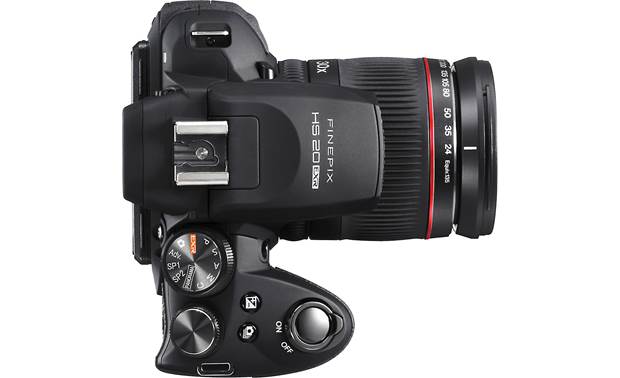
The traditional variety is the CCD (Charge Coupled Device) offering a sharp image but has a higher fuel consumption than CMOS (Complementary Metal Oxide Semiconductor) which gives a slightly softer result but is more efficient. For those of you that aren't photographically astute, there are two types of that are frequently used in digital cameras. It's certainly shown a lot of promise in the past with the cameras that have been fitted with it. Because the circuitry is on the back, it looks as though the sensor is fitted backwards so the back side gets illuminated by light from the lens.ĮXR is a new processor and sensor system designed to increase the resolution, produce better colours, lower noise and be an all round good egg. The back of the sensor isn't actually illuminated, the sensor gets it's name from when it's fitted to the camera.
#MYFINEPIX STUDIO REVIEW FULL#
This technique exposes the full sensor to light meaning that it's more responsive in low light situations and a lower ISO can therefore be used. Take, for example, the BSI EXR-CMOS sensor: BSI stands for Back Side Illuminated which means that all the circuitry that normally surrounds each pixel has been placed on the back of the sensor. The underlying specification looks more than enough to satisfy photographers that are looking for something more in their camera. Something that the younger generation may prefer but that's not to say that it's off limits to anyone else. The Z900EXR records video in the H.264 format and you can tag videos in camera for easy upload to YouTube. On the Fujifilm FinePix Z900EXR's top plate, there's only the shutter release with the zoom switch wrapped around it and a direct video record button for those candid moments so you don't have to go into menus and switch on the video mode first. It gives the camera a rough touch which is refreshing in a market of super smooth cameras on every shelf. The review model we tested was the black version which has a powder coating and the mottled effect found on some makes of DSLR. After we'd picked up the Z900EXR, we quickly changed our minds. The lens sits in the top left of the camera with a large plate of metal sliding over it to protect it and to also power the camera on or off.
#MYFINEPIX STUDIO REVIEW SERIES#
Without touching it, from the front it looks like the lower specification Z series of cameras.


So why do we have the Z900EXR sitting in front of us? What are its faults? The specification looks extremely impressive. Speaking of which, there's a saying that if something is too good to be true then it probably is. The Fujifilm FinePix Z900EXR costs £199.99 / $279.95 and is available in pink, black, red or blue. Sporting a 16 megapixel back-illuminated (BSI) EXR-CMOS sensor, 5x optical zoom, 3.5 inch touch screen, sensor shift image stabilisation, top ISO6400 sensitivity, 1600% dynamic range and up to 12 frames per second continuous shooting, on paper the Z900EXR seems to be a camera that's too good to be true. So what happens when performance is put into the stylish range? The new Finepix Z900EXR, that's what.

Fujifilm's range of cameras is very distinct in the way that it has a stylish series, a performance range and long zoom range.


 0 kommentar(er)
0 kommentar(er)
